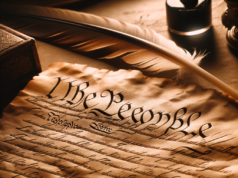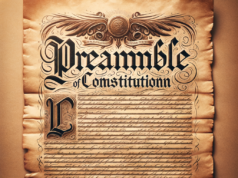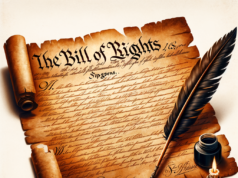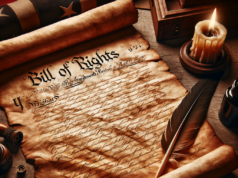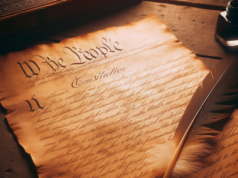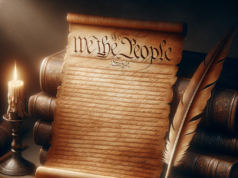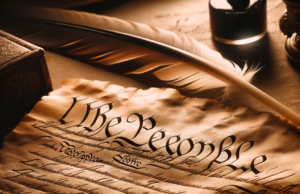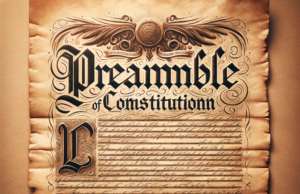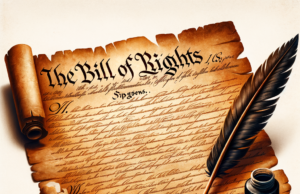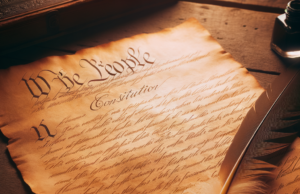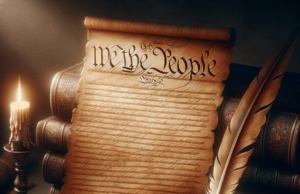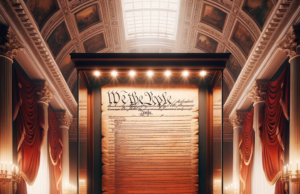
The Constitutional Convention of 1787: Shaping the Cornerstone of American Democracy
Introduction:
The Constitutional Convention of 1787 stands as a pivotal moment in American history, where the framers of the United States Constitution gathered to address the shortcomings of the Articles of Confederation. Held in Philadelphia’s Independence Hall, this convention brought together brilliant minds who shaped the very foundations of American democracy. In this article, we will explore the significance of the Constitutional Convention and the lasting impact it has had on the nation’s governance.
The Need for Change:
The preceding years under the Articles of Confederation had exposed numerous flaws in the system of governance. Weak central authority, limited powers, and inadequate means to regulate commerce were only a few of the issues that plagued the young nation. Recognizing the urgency for change, delegates from twelve states—Rhode Island being the exception—convened in Philadelphia with the intent of creating a stronger, more stable framework.
Key Figures and Debates:
The Constitutional Convention boasted an assembly of illustrious minds, including George Washington, Benjamin Franklin, James Madison, Alexander Hamilton, and many others. Spirited debates arose on critical topics such as representation, federal power, and the balance between state sovereignty and national unity.
The Great Compromise:
One of the most remarkable achievements of the convention was the crafting of the Great Compromise. Born out of heated debates between larger and smaller states, this compromise established a bicameral legislature, with the House of Representatives based on proportional representation and the Senate granting equal representation to all states. The Great Compromise struck a delicate balance that satisfied both those arguing for a more populous-based system and those who sought to protect the interests of smaller states.
Another significant and controversial issue that emerged during the convention was slavery. The delegates wrestled with the question of how enslaved individuals should be accounted for in terms of representation and taxation. Ultimately, the Three-Fifths Compromise was reached, determining that enslaved individuals would be counted as three-fifths of a person when determining representation in Congress. While this compromise was far from ideal and perpetuated the institution of slavery, it helped navigate the delicate political landscape of the time.
Separation of Powers:
The framers of the Constitution were deeply concerned with preventing tyranny and concentrated power. Inspired by Enlightenment thinkers, they developed a system of checks and balances that divided governmental authority into three branches: the executive, legislative, and judicial. This separation of powers ensured that no single branch could dominate the others, safeguarding individual liberties and maintaining the delicate equilibrium of democracy.
Ratification and Legacy:
Upon completing the Constitution, the document faced the challenge of ratification. Debates over its merits sparked intense discussions in state conventions across the country. The Federalist Papers, a collection of persuasive essays authored by Alexander Hamilton, James Madison, and John Jay, played a vital role in convincing the public of the Constitution’s value and encouraging its acceptance.
Conclusion:
The Constitutional Convention of 1787 represents a profound moment in American history, where visionary leaders crafted a blueprint for a democratic nation that would endure for centuries to come. Through compromises and heated debates, the framers established a system of government that would become the bedrock of American society, ensuring individual rights, balancing power, and allowing for a flexible framework that could adapt to the changing needs of future generations. The legacy of the Constitutional Convention lives on in the enduring principles and values that define the United States today.
The Constitutional Convention took place in 1787 in Philadelphia, PA. It was one of the primary instances of the gathering of delegates from the collective state of the Union. The Constitutional Convention was comprised of 55 delegates from 12 of the 13 states of the Union. Rhode Island, protesting the proposed ideals set forth in the Constitution, refused to send any
delegates.
The Constitutional Convention was presided over by George Washington, a delegate from Virginia, and the future first President of the United States. The actual content of the Constitution is considered to be a conglomeration of ideas contributed by various politicos of that time, including Thomas Jefferson, James Madison, Thomas Paine, and John Adams.
Due to the unrest caused by the gubernatorial system put in place by the Articles of Confederation, which consisted of a weak central government coupled with each state maintaining its individual sovereignty, many political figureheads of the time held that there needed to exist a vast restructuring of the governmental model serving the newly-formed United States of America. The initial realization of the importance of this overhaul was brought to light during a meeting held by George Washington at his home in Mount Vernon, Virginia, which focused on creating a mandated plan regarding the navigation of
the Potomac River.
Due to the fact that the Potomac River runs through multiple states, the establishment of a definitive plan was difficult due to the absence of any national policy. Each state had individual agency in the creation of laws and statutes regarding any events that took place within their respective borders. As a result, the fact became clear that additional legislative power needed to be afforded to the central government in order to eradicate confusion due in part to the legislative inconsistency that was occurring on national
level.
In the wake of the Federalist ideals set forth by Alexander Hamilton, the establishment of the Constitutional Convention was to solidify an the all-encompassing legislative process, which balanced power between State and governmental bodies. However, despite what some political figurehead and citizens alike viewed as glaring inefficiencies existing in the midst of the governmental structure set forth in the Articles of Confederation, other
citizens of the United States felt that both the ability for individual states to exists as sovereign entities, as well the lack of central government, allowed for a heightened sense of agency and autonomy within the scope of a conglomeratic framework.
As a result of the initial impasse on the part of various states – larger states and smaller states were amongst those who failed to arrive at an initial meeting of the minds – various legislative addenda was submitted to the text of the Constitution of the United States with the hopes of establishing a legislative methodology that would satisfy the needs of both larger states, as well as their smaller counterparts. In addition, issues such as slavery and individual state legislative representation were amongst the most largely debated during the Constitutional Convention.



